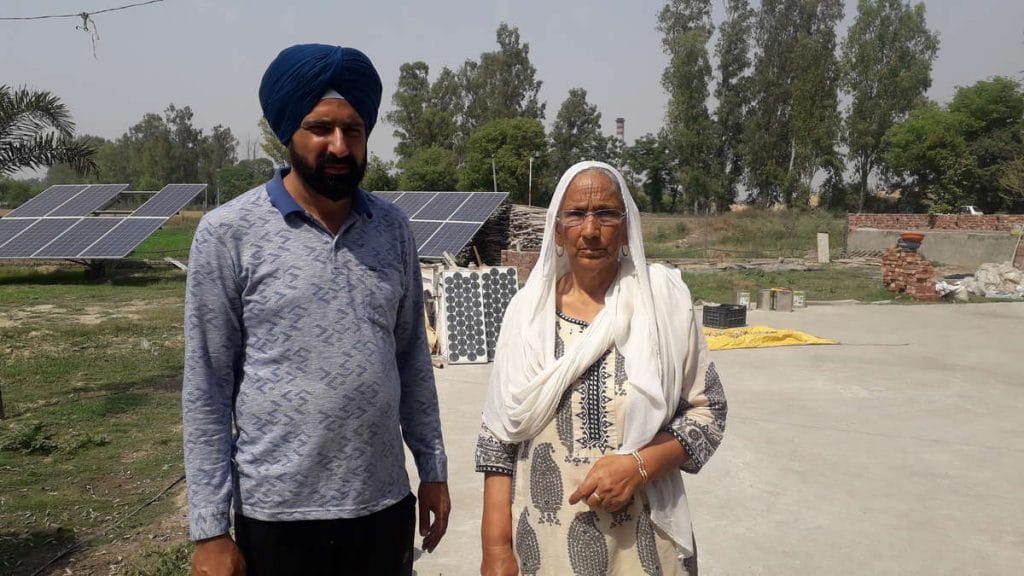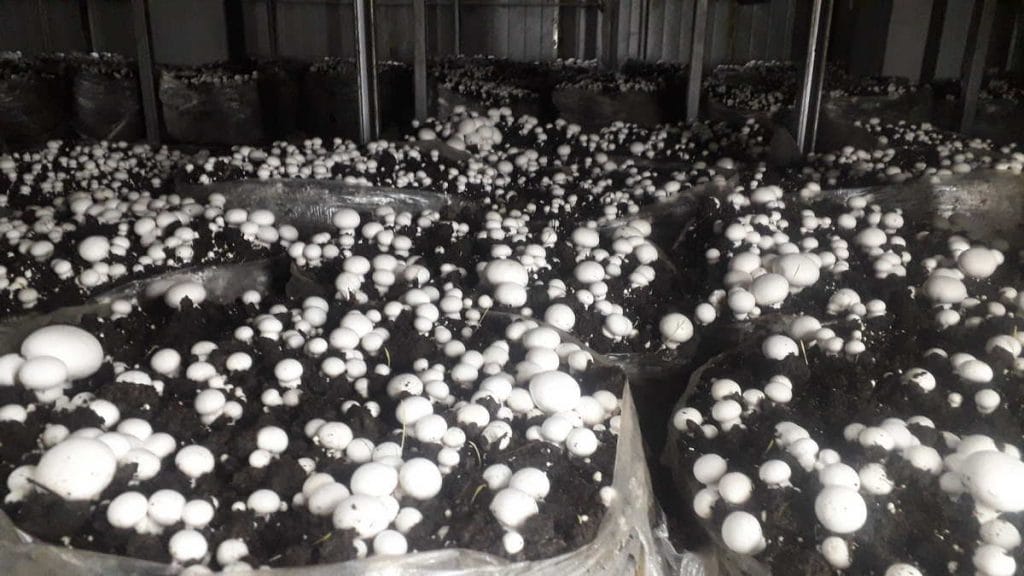Amritsar: As vehicles whiz by on a Sunday morning, a young woman arranges pickles and chips at a tiny shop on the side of Batala Road, near Amritsar. It’s an unremarkable scene except for a board near the outlet, which says: ‘Randhawa Mushroom Farm’. All the edibles in the shop, too, have mushrooms as the main ingredient.
A grey warehouse-like building stands behind the shop, accessed via a gated path and through a garden guarded by an alert pit bull terrier and an American bully.
Step inside, and you enter a parallel universe: cold, damp, earthy-smelling, and abloom in otherworldly crops, some shaped like seashells growing from suspended plastic bags, others springing white and smooth from dark compost.
This is where 66-year-old entrepreneur Harjinder Kaur Randhawa and her four sons grow, process, package, and store a wide array of mushrooms — from the most commonly available button variety to more exotic ones such as oyster, king oyster, shiitake, and paddy straw mushrooms.

While mushrooms are usually grown and sold in the winter months — from November to February — this air-conditioned facility enables the family to run a round-the-year business.
The Randhawas fit the definition of what are popularly called “progressive farmers” in Punjab: cultivators who have invested in innovative ways to diversify and break out of the paddy-wheat monoculture, which takes a toll on the soil and requires large amounts of water.
“If one wants to come out of the wheat-paddy cycle, it is very difficult to do farming without innovation,” Harjinder Kaur says.
Also Read: Pomegranate to prawns — how Barmer is moving beyond desert staples bajra & cumin
A hobby that slowly grew into a business
Harjinder Kaur’s first experiments with mushroom cultivation started in 1989 as a hobby in the courtyard of her house in Dhardeo, Amritsar district, after she’d completed a course at Punjab Agriculture University, she says.
Eventually, in the mid-1990s, she moved the cultivation to a location 3km away from home, at the four-acre plot on Batala Road where the current farm is located, and started selling some surplus produce, Harjinder Kaur says.

At first, this was mostly a winter enterprise, but the Randhawas realised they could stretch their business months if they managed to maintain the right temperature. For this, they initially built sheds and used air coolers and water sprinklers, says Harjinder’s 42-year-old son Mandeep Singh Randhawa.
In 2020, the family built the air-conditioned building, sprawled across 1.5 acres, on their land and this is when they were able to keep the business running through the year, Mandeep adds.
This facility cost the Randhawas Rs 3 crore to build, but they say the returns are worth it. After paying input costs — like electricity, labour, compost, and manure — they earn a profit of about Rs 50 lakh per year, Mandeep claims.
The family sells directly to clients, including through a Facebook page, but does not employ any agencies for marketing.
Symphony of temperatures
The air-conditioned building is single-storeyed except for one part that has two floors. There are 12 dark rooms for cultivation — each is about 600 square feet, with two columns of iron racks that are stacked with compost-filled plastic bags.
Even in the dim light, the bright caps of button mushrooms can be seen sprouting from these bags. These mushrooms, Mandeep Randhawa says, comprise around 90 per cent of their total output.

In a separate shed, an extension of the main building, are what look like punching bags hanging from bamboo scaffolds. These, too, are bags filled with compost from which spring oyster mushrooms with spatula-shaped caps, a central stipe (stalk), and furrows underneath the gills.

Setting the right temperature is key, with each stage of the cultivation cycle requiring careful calibration, Mandeep Randhawa explains.
In the first 15 days, called the spawning phase, temperatures have to be maintained between 25 and 22 degrees Celsius. For the next 15 days, called the casing phase, it has to be between 22 and 17 degrees Celsius, and, for the remaining 35-40 days, called the fruiting phase, it has to be kept at less than 17 degrees Celsius.
For storage, there is a separate unit that preserves the packed mushrooms between 3 and 4 degrees Celsius, Mandeep says.
The Randhawas employ around 100 people at the farm, most of them women from nearby villages. These workers are deployed in all the units, from growing to packaging and processing. It is the processing unit that makes all the mushroom chips, pickles, bhujias, and other items that are out on display at the counter outside the farm.

Manpreet Singh Grewal, advisor to Kisan Club, a farmers’ collective associated with Punjab Agriculture University, says that mushroom cultivation is a “good example” of how farmers are beginning to diversify in Punjab.
“Such progressive farming has grown, especially in the last 10 years, after farmers started uploading videos on YouTube and Facebook,” he says.
However, one drawback to such farming is the high cost of getting started, he adds.
“Even though there is an urgent need to come out of the paddy-wheat cycle, it would be wrong to present this kind of progressive farming as an alternative. I say so because the initial investment is way too much, which most farmers in Punjab won’t be able to afford,” Grewal says.
He hopes, though, that progressive farming will eventually become more accessible: “These cultivators have certain skill sets, which can eventually help finding alternatives to enable more affordable ways to diversify.”
(Edited by Asavari Singh)
Also Read: Let farmers lease land like people rent houses – Land laws are holding India back






